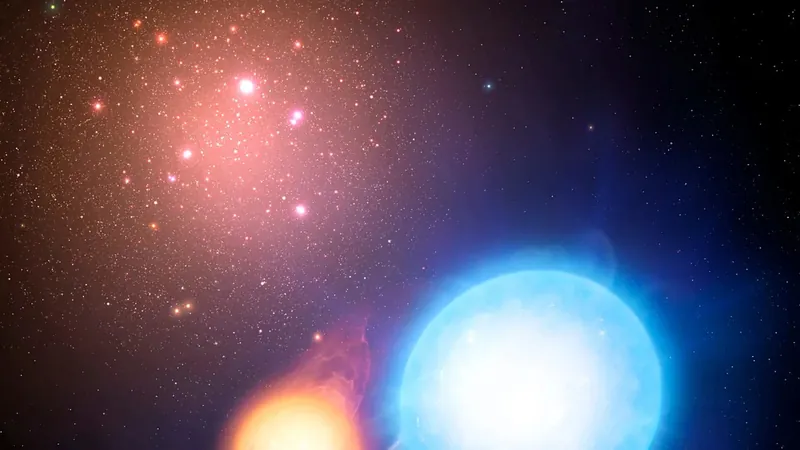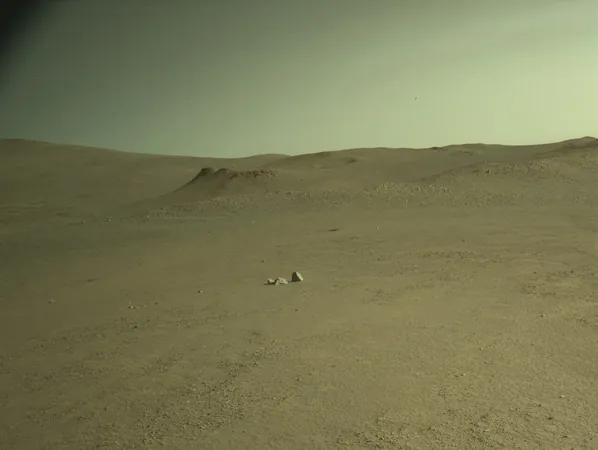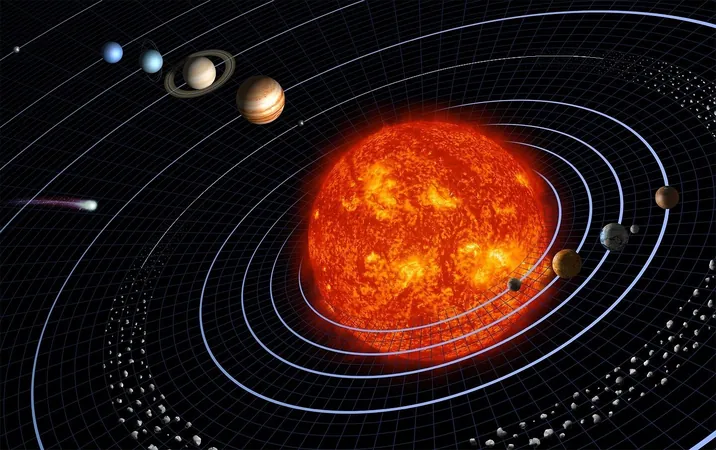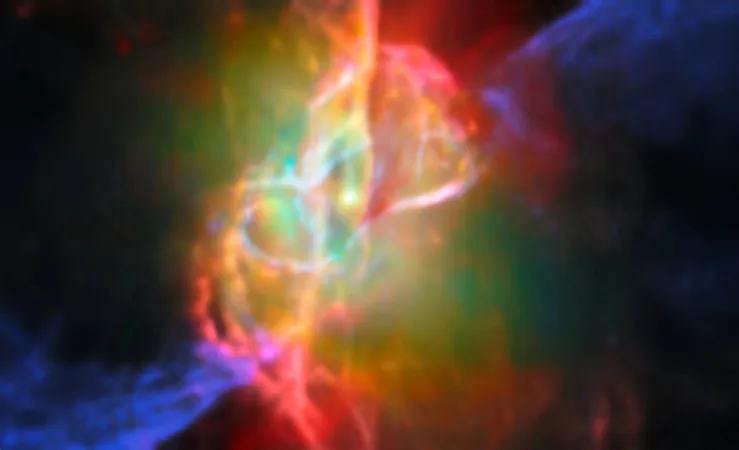
Star Flickers Out: The Surprising Science Behind Its Mysterious Disappearance
2025-08-22
Author: Amelia
An Astronomy Mystery Unfolds
Stars are known to fade and vanish, but when one star, ASASSN-24fw, dimmed dramatically for eight months after shining steadily for over a decade, astronomers were left scratching their heads. This particular star experienced a staggering 97% drop in brightness between late 2024 and early 2025, before mysteriously regaining its glow.
Unveiling the Culprit: A Dusty Veil
An international research team led by scientists from The Ohio State University believes they have cracked the case. In a groundbreaking study published in The Open Journal of Astrophysics, they propose that the star's dimming wasn't due to changes within the star itself, but rather a massive cloud of dust and gas surrounding it, obscuring our view.
Raquel Forés-Toribio, the study's lead author and a postdoctoral researcher, revealed, "We explored various scenarios. The evidence points toward a disk of dust surrounding the star. This means the star itself is stable, while a veil of cosmic material temporarily blocked our line of sight."
A Closer Look at ASASSN-24fw
ASASSN-24fw is an F-type star, slightly larger and more massive than our Sun, located about 3,000 light-years away. Researchers estimate that the surrounding dust disk spans approximately 1.3 astronomical units (AU)—greater than the distance between Earth and the Sun. This intriguing material, resembling clusters of carbon or water ice, offers a tantalizing glimpse into stellar formation and evolution.
A Hidden Star in the Mix?
However, the mystery doesn't stop there. Forés-Toribio suggests the presence of a smaller, cooler companion star, indicating a potentially hidden binary system. "The faint star could be causing the geometric changes leading to the dimming. We believe there's more than meets the eye in this stellar pair," she added.
A Rare Cosmic Phenomenon
Dimming events like this are exceptionally rare, and ASASSN-24fw's case is particularly striking, according to co-author Chris Kochanek. Even extensive searches for similar phenomena yielded few results, making this occurrence all the more significant. "We were surprised to find so few parallels, which raises intriguing questions for future research," said Kochanek.
Tools of the Trade
This remarkable discovery was made possible by the All-Sky Automated Survey for Supernovae (ASAS-SN), which has been monitoring the night sky for over a decade, accumulating nearly 14 million images of celestial events.
Future Eclipses and Long-Term Research
According to the researchers, ASASSN-24fw will likely experience another eclipse in around 43.8 years. Despite not expecting to witness this future event, the team aims to lay a robust foundation for future scientists—ensuring that data remains accessible for the coming century.
"We’re dedicated to preserving historical data for any cosmic events that may unfold," said co-author Krzysztof Stanek.
Beyond Current Discoveries
As the team anticipates the star's return to full brightness, they plan to employ advanced telescopes like the James Webb Space Telescope for further observations. "This case exemplifies how unusual phenomena can enrich our understanding of astrophysics. It challenges our theories and drives us to explore deeper," Stanek remarked.
With contributions from various institutions, including Boston University and University of Hawai'i, this exciting research opens new doors to understanding the mysterious workings of our universe.









 Brasil (PT)
Brasil (PT)
 Canada (EN)
Canada (EN)
 Chile (ES)
Chile (ES)
 Česko (CS)
Česko (CS)
 대한민국 (KO)
대한민국 (KO)
 España (ES)
España (ES)
 France (FR)
France (FR)
 Hong Kong (EN)
Hong Kong (EN)
 Italia (IT)
Italia (IT)
 日本 (JA)
日本 (JA)
 Magyarország (HU)
Magyarország (HU)
 Norge (NO)
Norge (NO)
 Polska (PL)
Polska (PL)
 Schweiz (DE)
Schweiz (DE)
 Singapore (EN)
Singapore (EN)
 Sverige (SV)
Sverige (SV)
 Suomi (FI)
Suomi (FI)
 Türkiye (TR)
Türkiye (TR)
 الإمارات العربية المتحدة (AR)
الإمارات العربية المتحدة (AR)